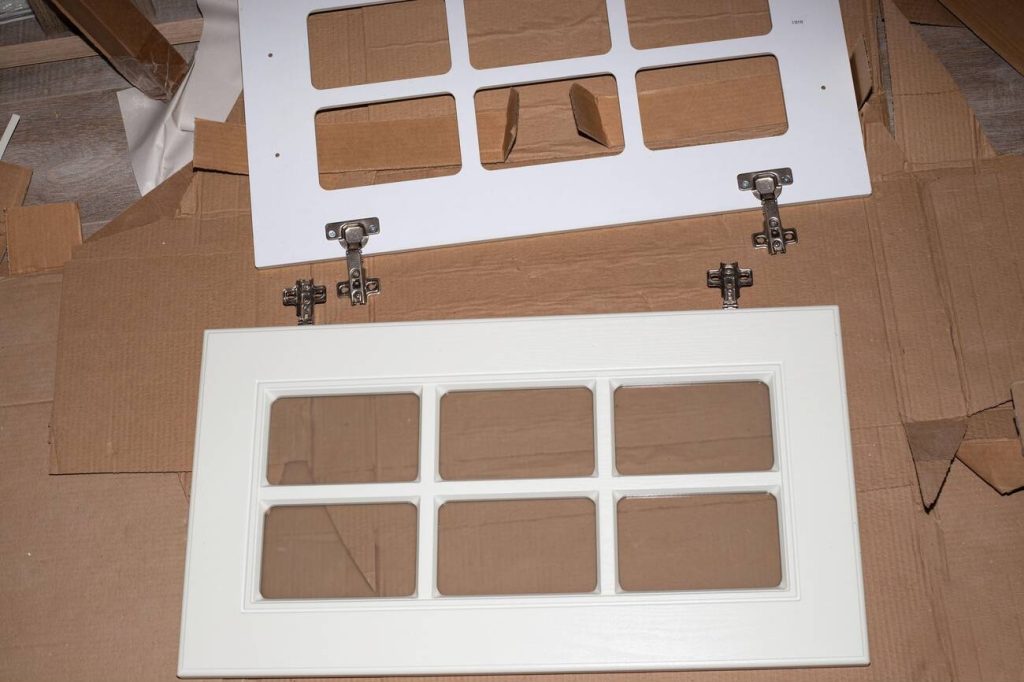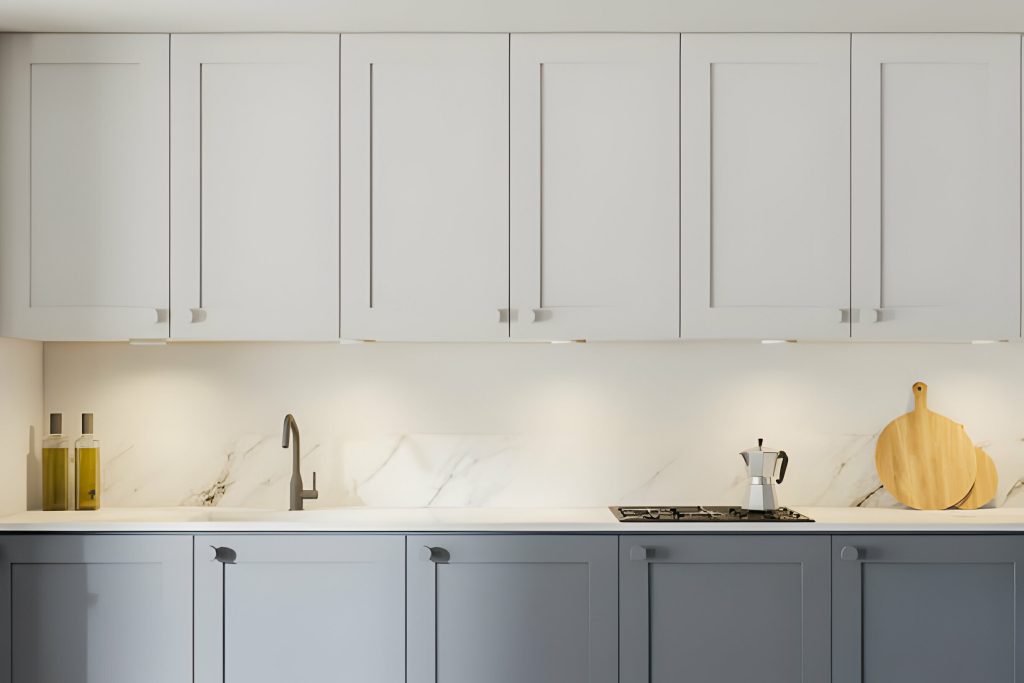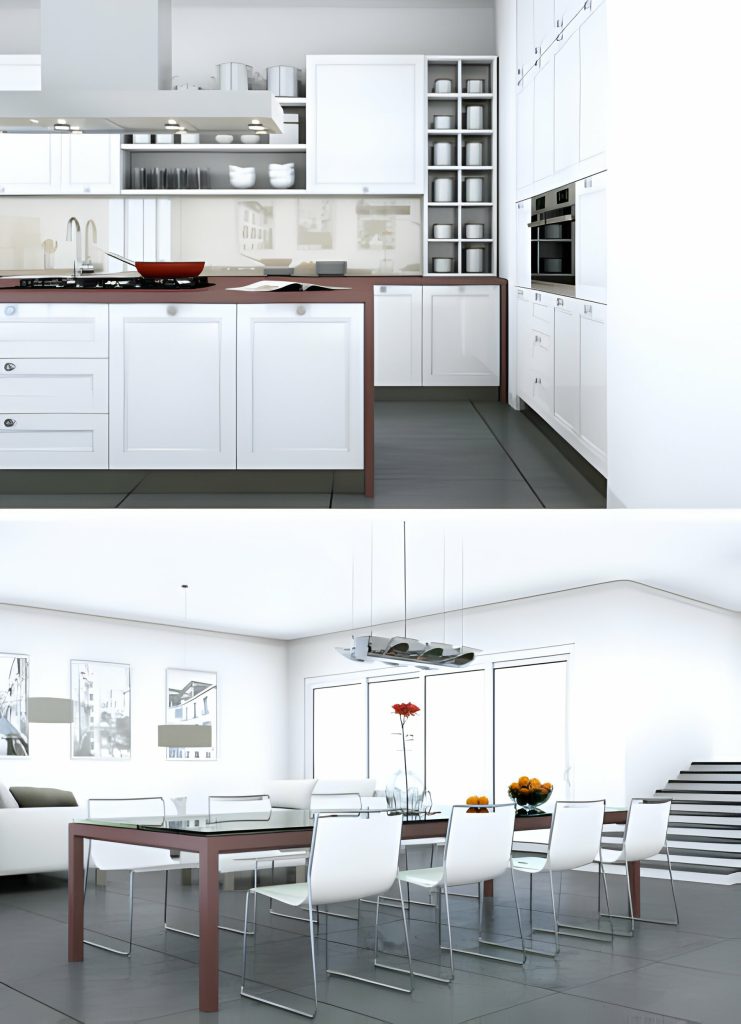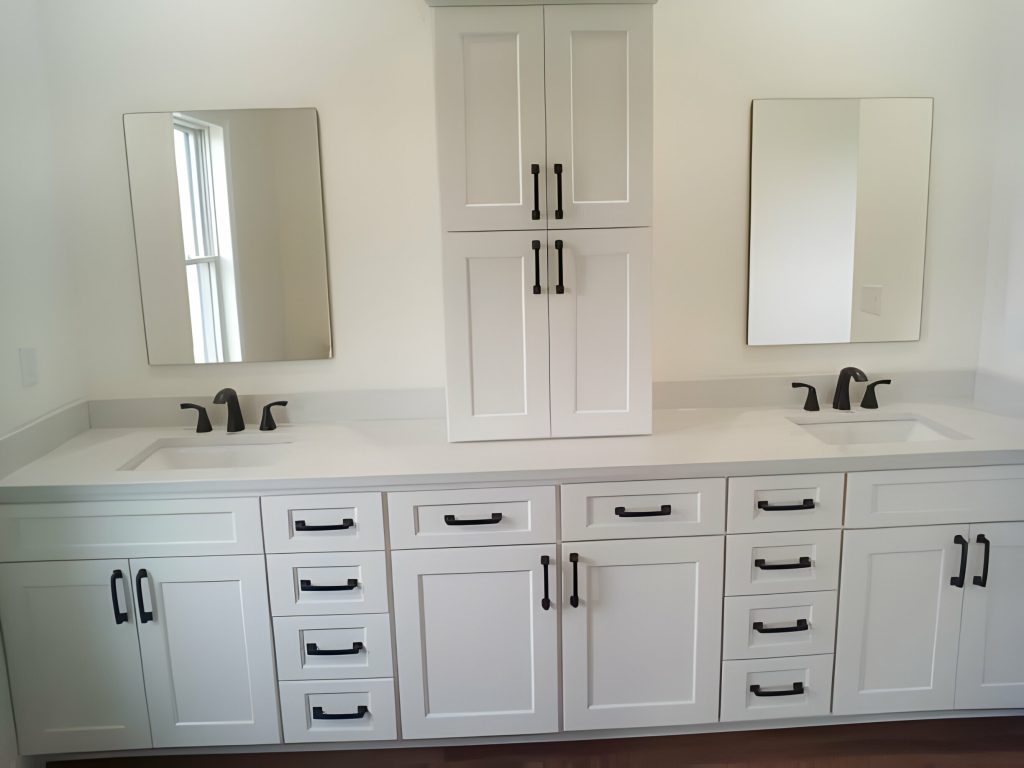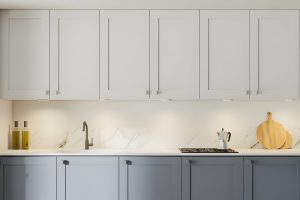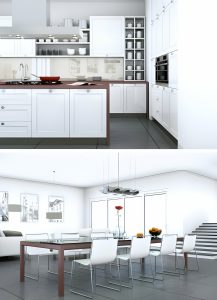If you’re looking to upgrade your cabinets and give them a sleek, modern look, making glass cabinet doors is a project you can tackle yourself. In this article, we’ll guide you through the process of choosing the right glass, cutting it properly, and creating beautiful DIY glass cabinet doors that will transform your space. So let’s get started!
Choosing the Right Glass for Your Cabinet Doors
To choose the right glass for your cabinet doors, consider your aesthetic preferences and functional needs. Start by deciding on the thickness of the glass. Thicker glass is more durable but heavier, while thinner glass is lighter but may not be as sturdy. Next, explore different types of glass finishes such as clear, frosted, or seeded. Clear glass is a timeless and economical option, while frosted or seeded glass adds style but can be more expensive.
You may also want to consider using plexiglass for your cabinet doors. Plexiglass is a non-breakable option that can be scratched more easily than traditional glass. When measuring for glass panels, make sure to measure accurately and account for any necessary adjustments during installation.
To clean your glass cabinet doors, use a mild soap and water solution and avoid abrasive cleaners that can damage the finish. Regular maintenance will help keep them looking their best.
Cutting Glass for Cabinet Doors: Store Vs. DIY Methods
When cutting the glass for your cabinet doors, you can easily have it done at a local home improvement store or opt for a DIY method using a sharp utility knife or table saw. Both options have their pros and cons. Choosing between glass and plexiglass for your cabinet doors depends on your preferences and needs. Glass offers an elegant and timeless look, while plexiglass is non-breakable but more prone to scratching. Store cutting provides precision and convenience, but DIY cutting allows for customization and cost savings. To achieve professional results when making DIY glass cabinet doors, ensure proper measurements, use quality materials, and follow the correct techniques. Converting solid cabinet doors to glass inserts involves removing the wood panel, routing a groove for the glass, and properly hanging the doors with suitable hinges.
Step-by-Step Guide to Making DIY Glass Cabinet Doors
For achieving professional results when creating your own glass cabinet doors, ensure precise measurements, use quality materials, and follow the correct techniques. When it comes to glass door styles, there are various options to choose from. Consider plain clear glass for a timeless and economical look, or opt for frosted or seeded glass to add style, although these options may be more expensive. If you’re concerned about breakage, plexiglass is a non-breakable alternative. However, keep in mind that plexiglass is more prone to scratching than glass. Once you have chosen your desired style of glass, it’s important to know how to properly install and maintain the doors. Additionally, if you’re looking for design ideas for your glass cabinet doors, consider incorporating decorative elements such as stained or frosted glass panels.
Converting Solid Cabinet Doors to Glass Inserts: A DIY Project
Remove the wood panel from your existing door frame to convert solid cabinet doors into glass inserts. This DIY project allows you to update the look of your kitchen and add a touch of elegance by incorporating glass panels. To achieve this, follow these steps:
- Glass Panel Installation:
- Measure and mark the dimensions for the glass panels on the cabinet doors.
- Use a glass cutter or professional glass cutting service to cut the glass to size.
- Install glass retainer clips or molding to secure the glass panels in place.
- Door Frame Modification:
- Use a router to remove the back part of the door frame.
- Router a groove along the inside of the door frame for inserting the glass panel.
- Hardware Selection:
- Determine the correct type of hinges for your cabinet doors.
- Choose magnetic catches or roller catches to keep the doors closed securely.
- Finishing Options:
- Apply a clear finish or paint to protect and enhance the appearance of both doors and frames.
Router a Groove for the Glass: Essential Steps
To router a groove for the glass panels, use a rabbeting router bit or a 3/8 straight router bit with a corner guide. This step is crucial in creating glass cabinet doors. The groove allows the glass to sit securely within the door frame. When choosing glass for your doors, consider different thickness options and finishes that suit your style and needs. Additionally, selecting appropriate hardware such as hinges and catches is essential for smooth operation and secure closure of the doors. During installation, ensure proper alignment and make any necessary adjustments for a perfect fit. Lastly, don’t forget to follow maintenance tips to keep your glass cabinet doors looking pristine for years to come.
Hanging Glass Cabinet Doors: Hinge Selection and Installation
When hanging your glass cabinet doors, you need to consider the correct type of hinges for smooth operation and secure closure. Here are some key points to keep in mind:
- Choosing Hinges:
- Select hinges specifically designed for glass cabinet doors.
- Opt for hinges that provide ample support and stability for the weight of the glass panels.
- Consider using self-closing or soft-close hinges for a quieter closing mechanism.
- Adjusting Door Swing:
- Ensure that the doors swing freely without any obstructions.
- Use adjustable hinges to fine-tune the door swing if needed.
- Test the swing of each door before final installation to ensure proper alignment.
- Cleaning Glass Panels:
- Regularly clean the glass panels with a mild soap and water solution.
- Avoid using abrasive cleaners that can damage or scratch the glass surface.
- Dry the glass thoroughly after cleaning to prevent water spots.
Securing Glass Cabinet Doors: Catches, Hinges, and Handles
Ensure that your glass cabinet doors are securely closed by installing magnetic catches or roller catches. These catches provide a reliable way to keep your doors shut, preventing any accidental opening or damage to the contents inside. Additionally, consider using soft close hinges for a quieter and safer closing mechanism. These hinges ensure that the doors close gently and smoothly, reducing the risk of slamming or pinched fingers. To enhance the appearance and functionality of your glass cabinet doors, you can also add decorative knobs or handles. Choose ones that complement your overall design aesthetic and make it easy to open and close the doors. Finally, apply a clear finish to protect and enhance the natural beauty of the doors. Regularly clean them with a mild soap solution to keep them looking their best.
Proper Maintenance Tips for Glass Cabinet Doors
Regularly cleaning glass cabinet doors with a mild soap and water solution helps maintain their appearance and prolong their lifespan. To ensure proper maintenance of your glass cabinet doors, follow these cleaning techniques:
- Use a soft cloth or sponge to gently wipe the surface of the glass.
- Avoid using abrasive cleaners or harsh chemicals that can scratch or damage the glass.
- Pay special attention to any fingerprints or smudges and clean them thoroughly.
- Inspect the hardware regularly for any signs of wear or damage, such as loose screws or broken hinges.
- Avoid excessive moisture by keeping the doors dry and preventing water from seeping into the cabinets.
Enhancing Cabinet Doors With Glass Panels: Design Ideas
Now that you know how to properly maintain glass cabinet doors, let’s explore some ways to enhance them with glass panels. There are various alternatives to traditional clear glass that can add a unique touch to your cabinets. Consider using frosted or seeded glass for a more stylish and elegant look. If you’re feeling creative, you can even try DIY glass etching to personalize your cabinet doors.
In addition to choosing the right type of glass, it’s important to select the appropriate cabinet door style. Popular options include shaker-style doors, which have a simple and timeless design, and mullion-style doors, which feature decorative dividers between the glass panels.
To complete the look of your glass cabinet doors, don’t forget about the hardware. Opt for sleek and modern handles or knobs that complement the overall aesthetic of your kitchen.
When it comes to cleaning your glass cabinet doors, use a mild soap and water solution instead of abrasive cleaners that could damage the finish. Regularly inspect hinges and catches for any signs of wear or damage, tightening loose screws or replacing damaged hardware as necessary.
Troubleshooting Common Issues With Glass Cabinet Doors
If the doors aren’t closing properly, check for any obstructions or misaligned hinges. Here are some troubleshooting tips for common issues with glass cabinet doors:
- Adjusting hinges:
- Tighten loose screws on the hinges to ensure proper alignment.
- Use a screwdriver to make small adjustments to the hinge position if needed.
- Preventing glass panel movement:
- Apply clear silicone adhesive along the edges of the glass panels to secure them in place.
- Install rubber bumpers or foam strips between the glass and frame to prevent rattling.
- Dealing with scratches on glass:
- Use a mild glass cleaner and a soft cloth to gently buff out minor scratches.
- For deeper scratches, consider using a specialized glass scratch repair kit.
- Replacing broken glass panels:
- Measure the dimensions of the existing panel and order a replacement from a local supplier.
- Remove any remaining shards of broken glass before installing the new panel.
- Addressing foggy or cloudy glass:
- Clean both sides of the glass thoroughly with vinegar or specialized window cleaner.
- If condensation persists, it may indicate an issue with insulation. Consult a professional for further assistance.
Adding Decorative Elements to Glass Cabinet Doors
To enhance the appearance of your glass cabinet doors, consider adding decorative elements such as stained or frosted glass. Stained glass options can bring a pop of color and artistic flair to your cabinets. You can choose from a variety of designs and patterns that suit your style and taste. Etched glass designs offer a more subtle and elegant look, with intricate patterns etched onto the surface of the glass. Frosted glass patterns provide privacy while still allowing light to pass through, making them perfect for showcasing items inside your cabinets. When installing the glass panels, make sure to use proper glass door hardware for secure and seamless integration. By incorporating these different techniques, you can transform your ordinary cabinet doors into stunning focal points in your space.
Considerations for Replacing Damaged Glass Cabinet Doors
When replacing damaged glass cabinet doors, consider the type of material that will best suit your needs and aesthetic preferences. There are several replacement options available to choose from. Here are some factors to consider:
- Glass thickness: Determine the thickness of the glass based on durability and design preferences.
- Installation process: Consider whether you want a DIY installation or professional assistance for a seamless and secure fit.
- Cost considerations: Evaluate the cost of different materials and installation methods to stay within your budget.
- Alternative materials: Explore alternative materials like plexiglass or acrylic if you’re looking for a non-breakable option.
